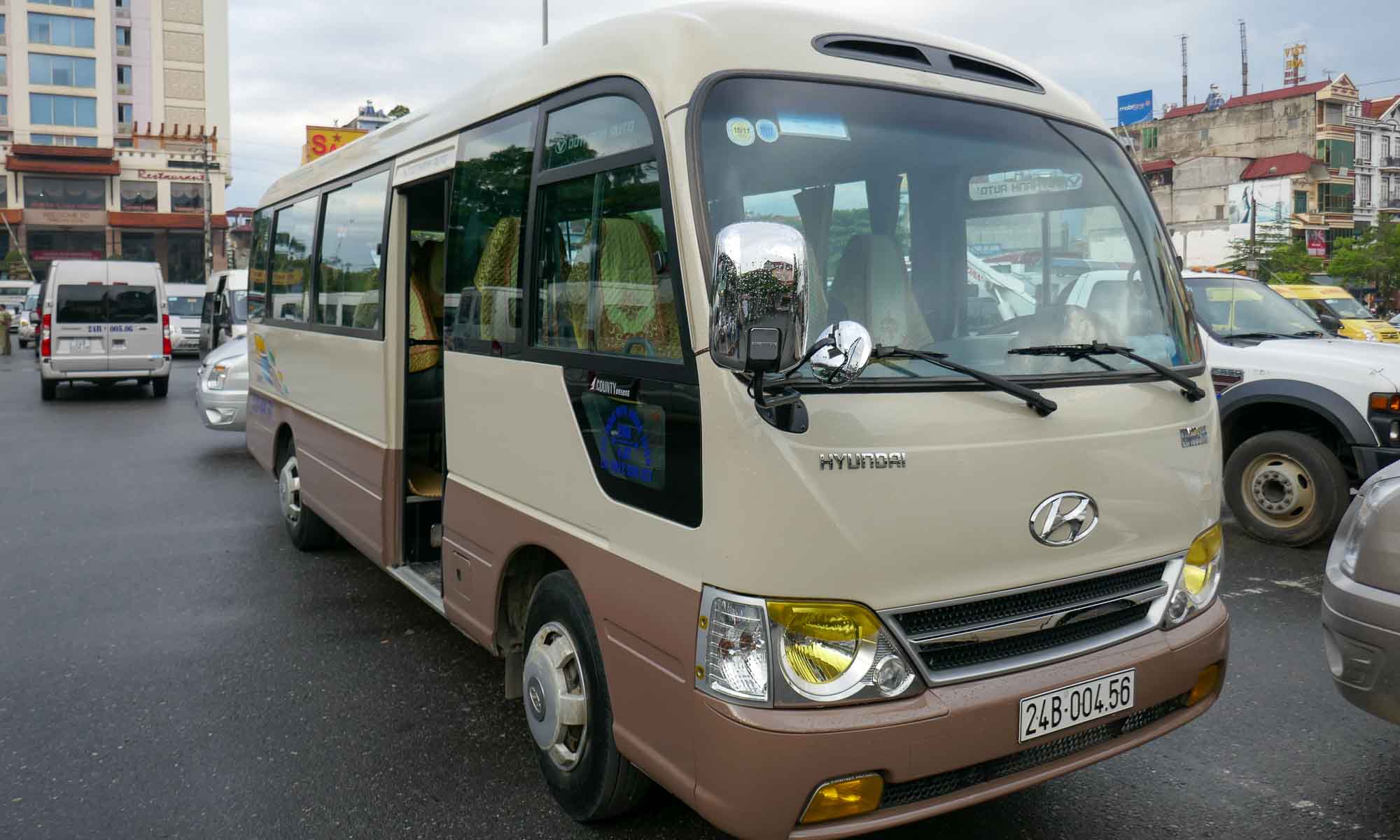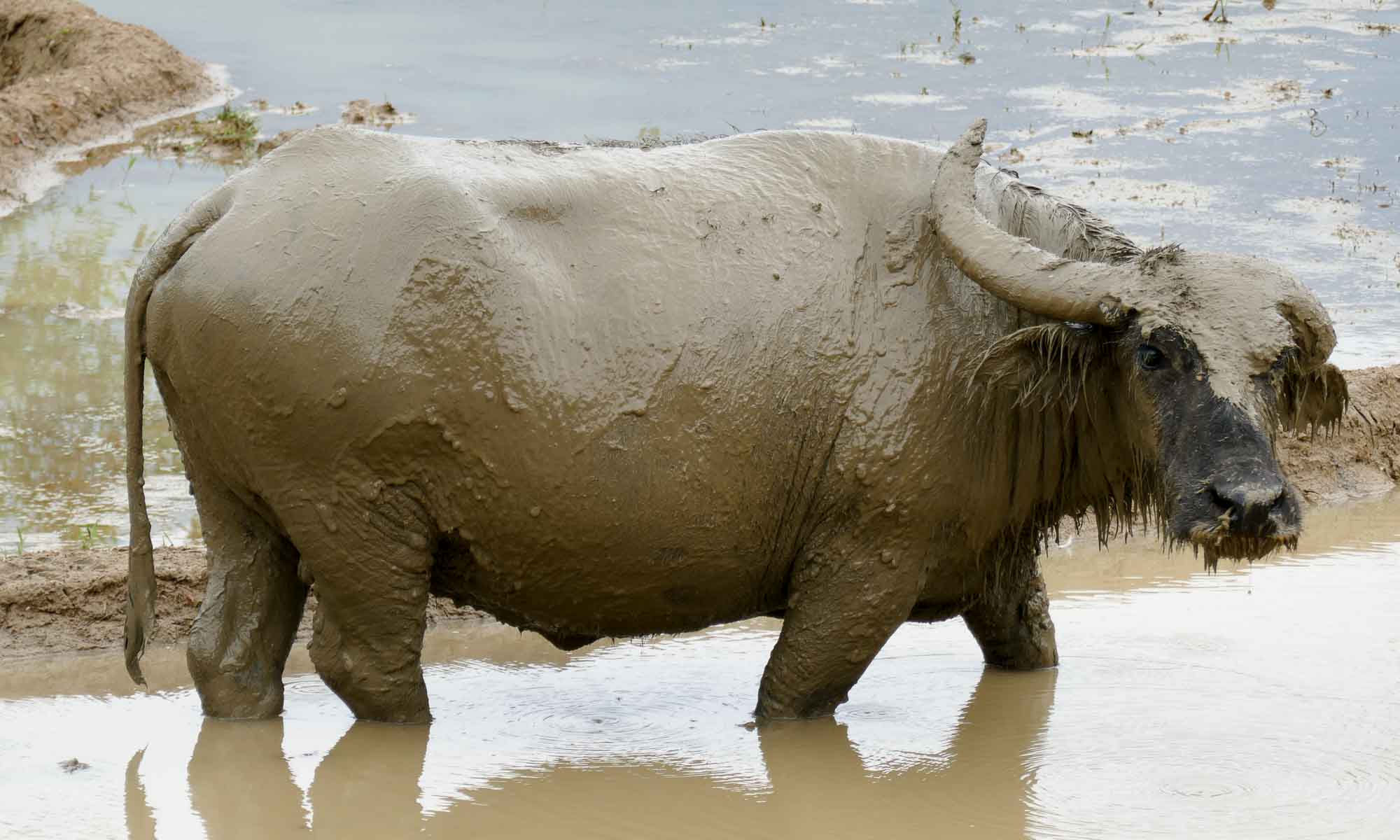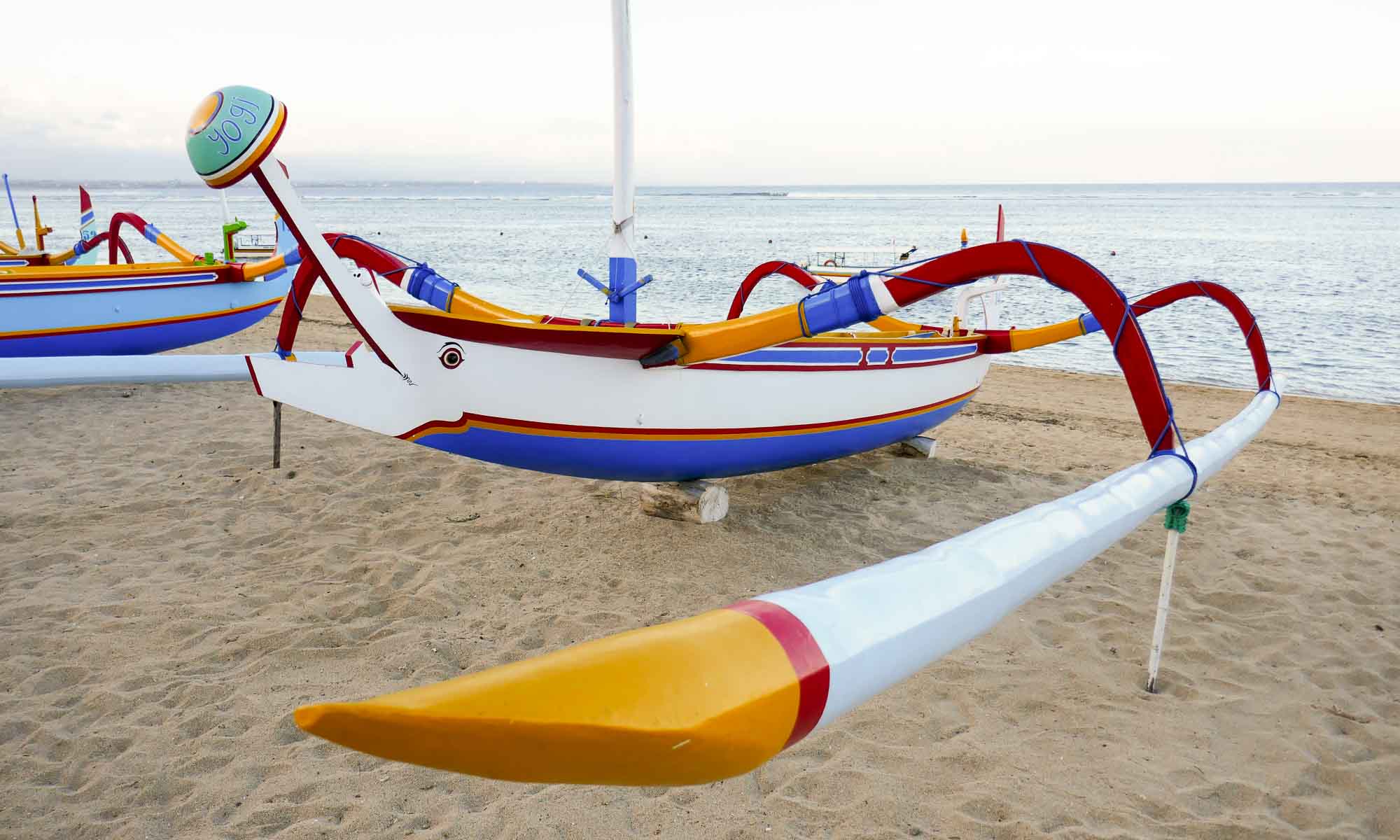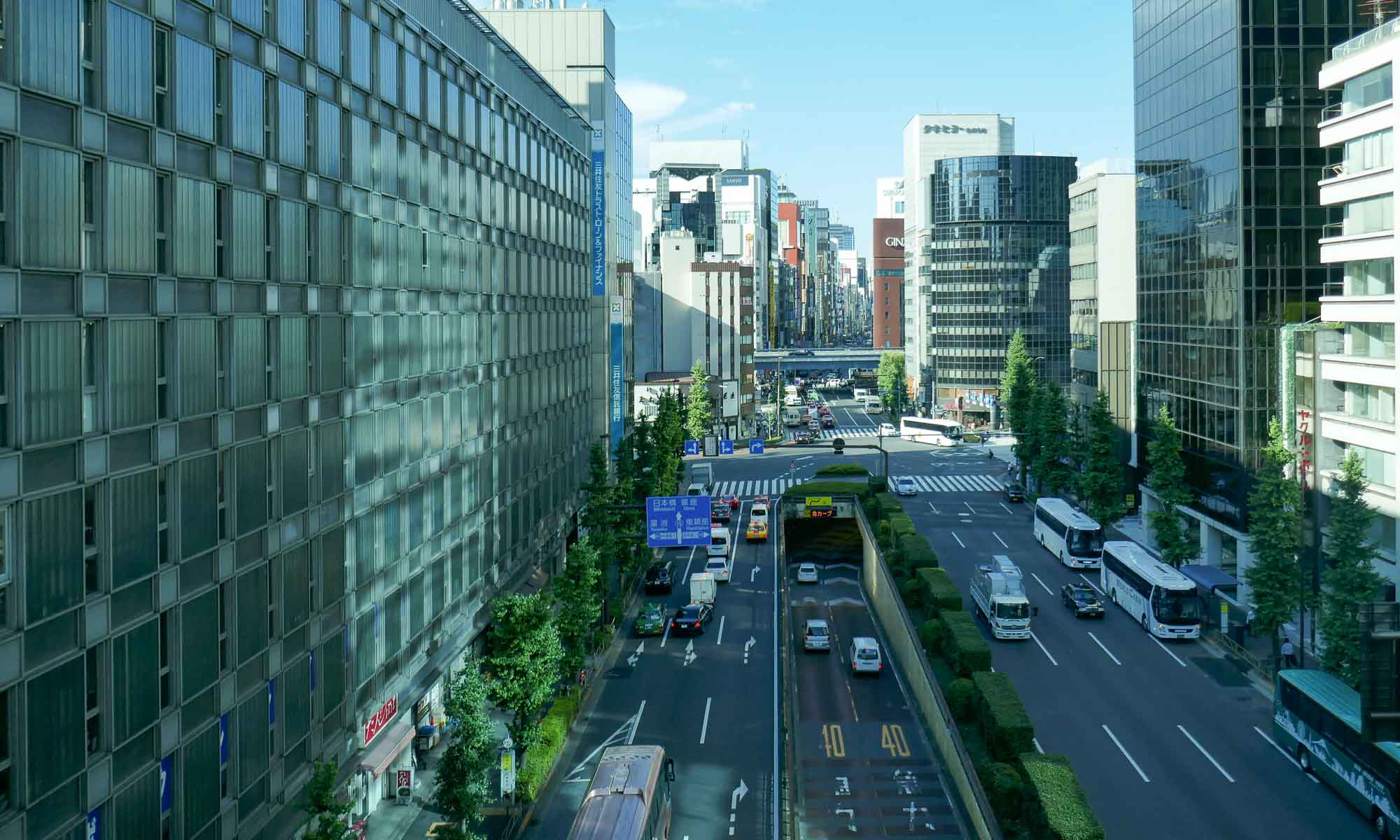Sa Pa is located about 1,500 m above sea level, in the northwestern mountains of Vietnam. In the 19th century it was inhabited by both French military and civilians, but by the end of the war, most of the French colonial buildings were completely destroyed. After this, there was some migration from the various lowland minority groups. Today, the population is around 30,000, with majority from the H’mong, Dao, Kinh, Tay and Giay minority groups.

Sa Pa is 100% touristy! That is a fact. But it is still worth visiting, if only to appreciate the picturesque view of mountains covered with lush forests and rice terraces. Unfortunately due to the increase in tourism, every tourist is thought to be a source of wealth for the minority villagers, thus several of them (from the youngest to the oldest) have become very pushy in attempts to either sell their products or to coerce you to enable them to be your tour guide.
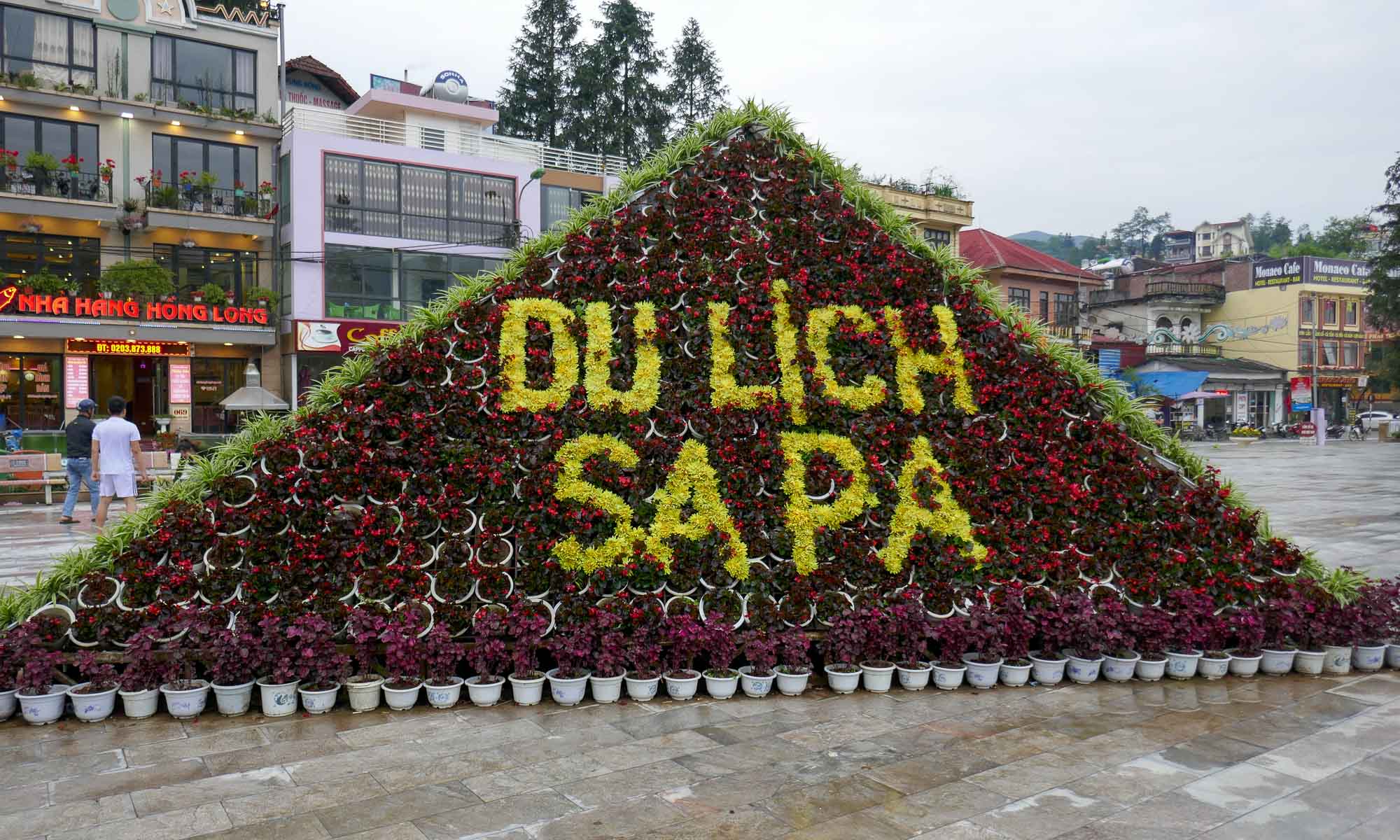

Highlights of Sa Pa
Most people come to Sa Pa to trek into the rice terraces with a number of people spending a night or two in the minority villages with the villagers. Our intention was to avoid the pushy villagers and trek into the rice terraces without a guide.
Cat Cat Village
The most touristy village, which in hindsight was not worth going to in our opinion was Cat Cat village. Located about 30 minutes walk downhill along a picturesque road from Sa Pa, Cat Cat village has been made into a tourist attraction. Case in point, there is an entrance fee. Historically, the village was formed back in the 19th century, by the migration into the hills of families belonging to the Black H’mong ethnic group. Within the village is a waterfall, some traditional houses, a performing arts center and mostly shops selling all sorts of local products. While there are awesome views into the neighbouring rice terraces, as well as treks starting from the village, other treks are available from elsewhere without having to pay the entrance fee.
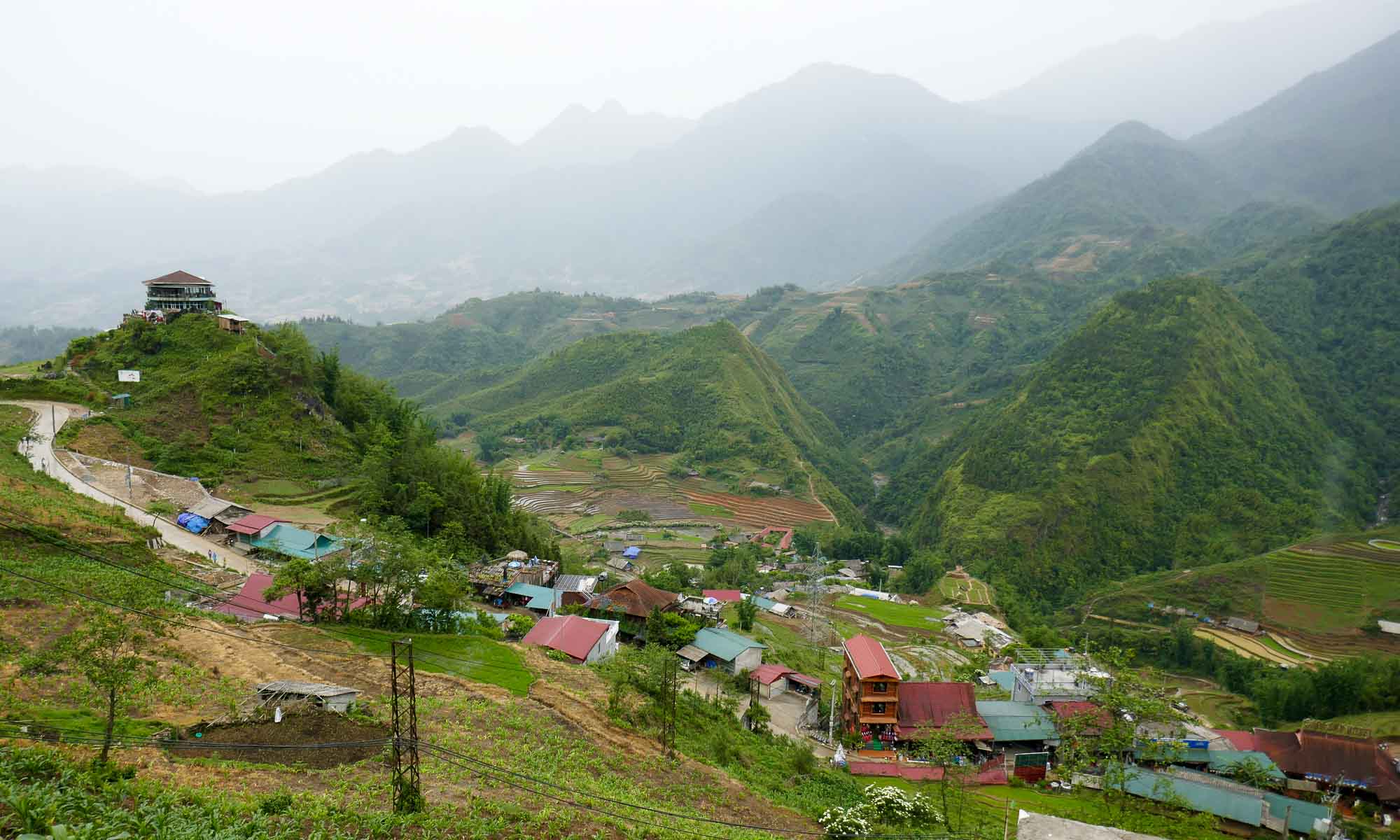

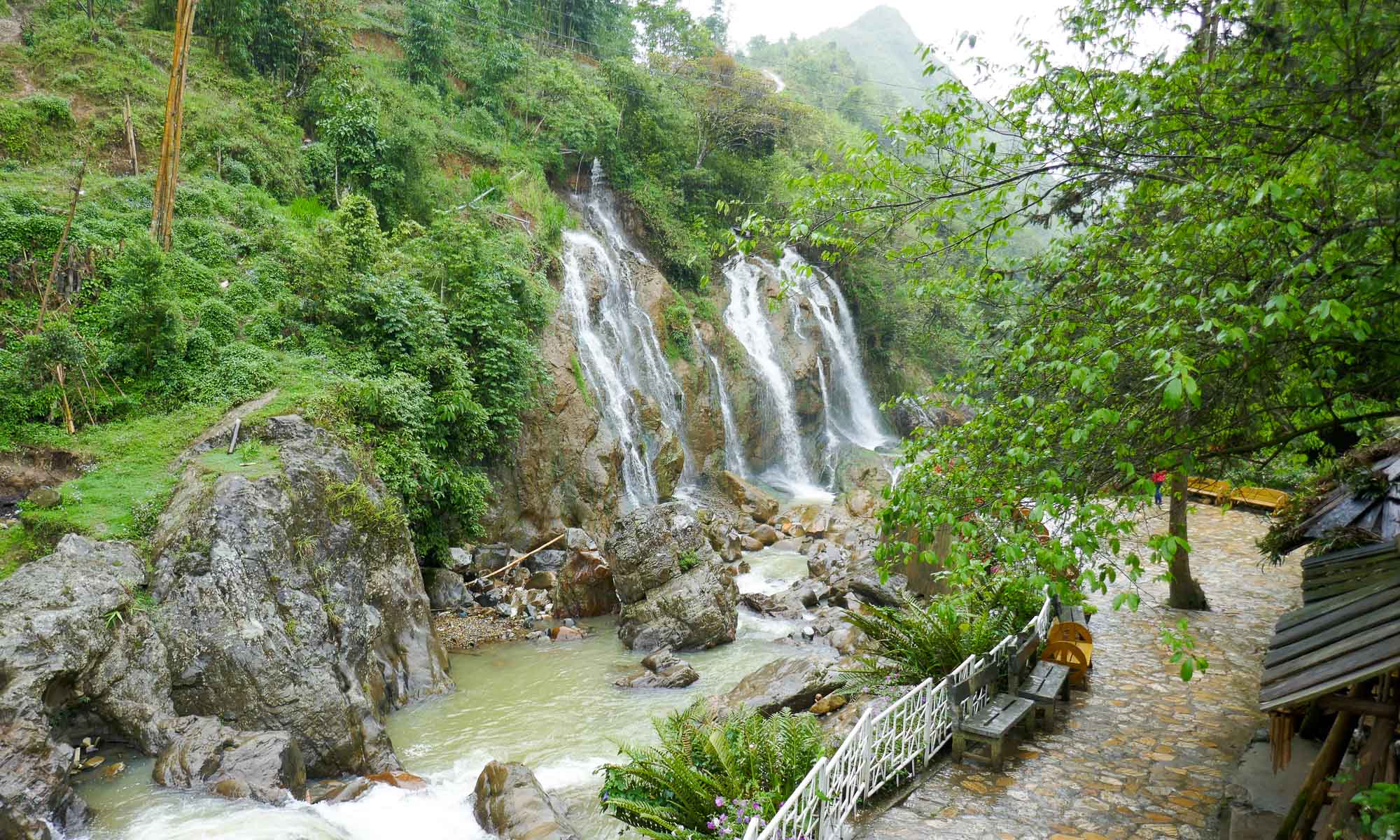

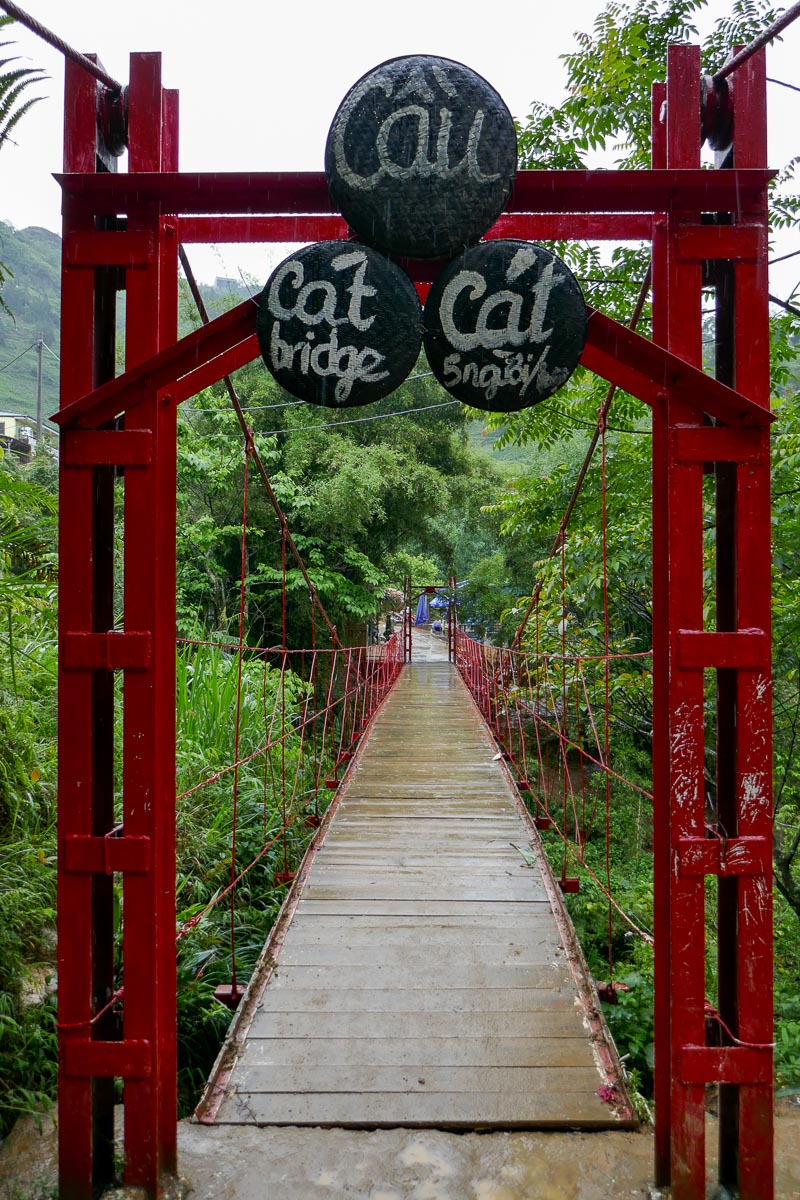
Admission fee: VND 50,000
Trekking – Lao Chai and Ta Van villages
While there are several guided treks in Sa Pa that allow visitors to enjoy the views of the rice terraces, either offered by hotels, agencies, the persistent Black H’mong ladies or the visitor centres, we decided to go without a guide.
This proved pretty difficult, not necessarily due to the terrain or the route, but to the persistent Black H’mong grandmother, that we met towards the start of our trek. Despite us politely asking her to leave, she refused and stuck with us for several miles. At one point we decided it was best to offer her some money, which worked and we were able to part ways. We trekked through the rice terraces for about 20 km on both sides of the Muong Hoa river, atimes getting directional guidance from one of the youngest H’mong villagers who also wanted compensation.
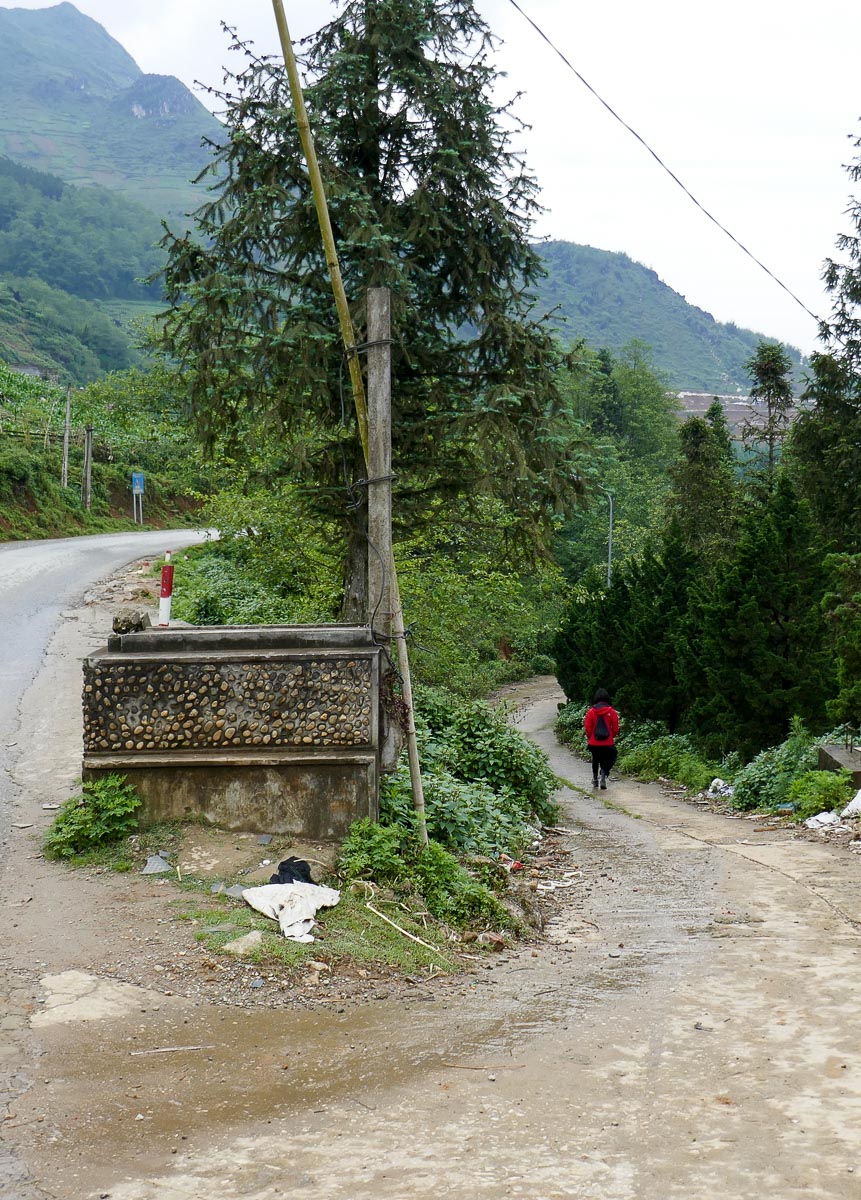
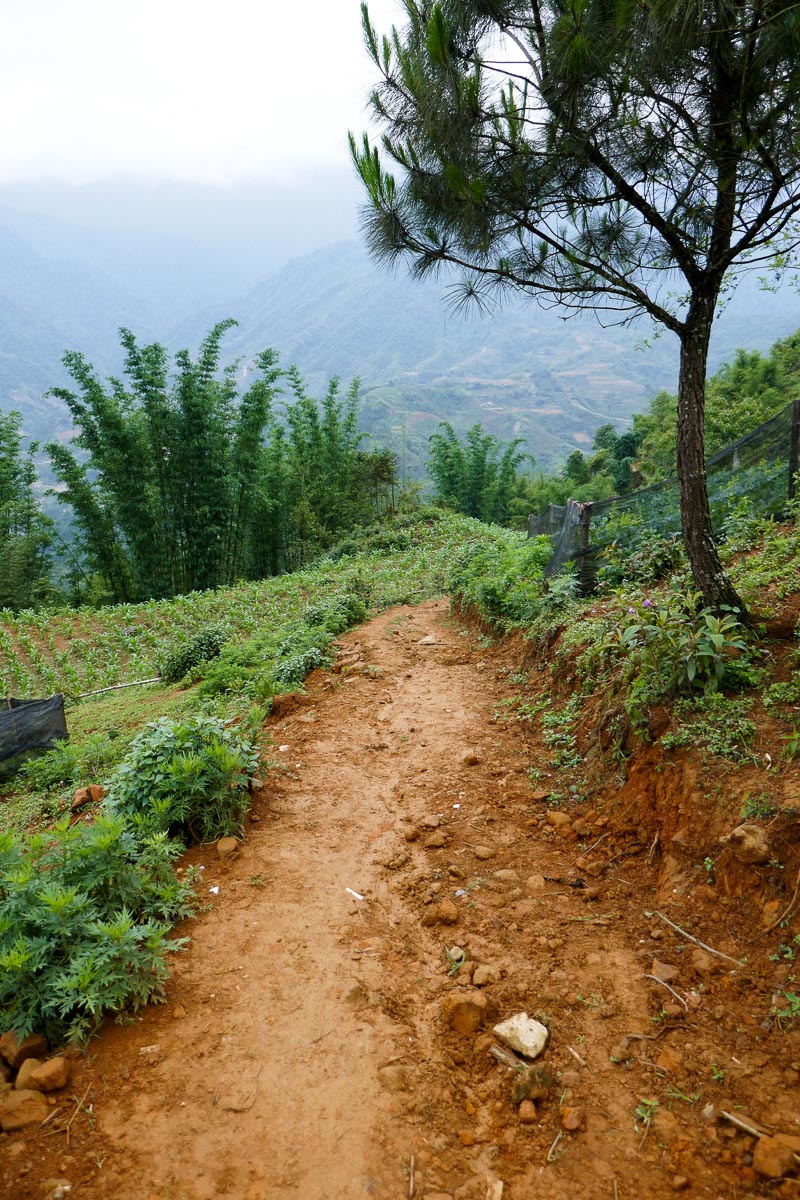
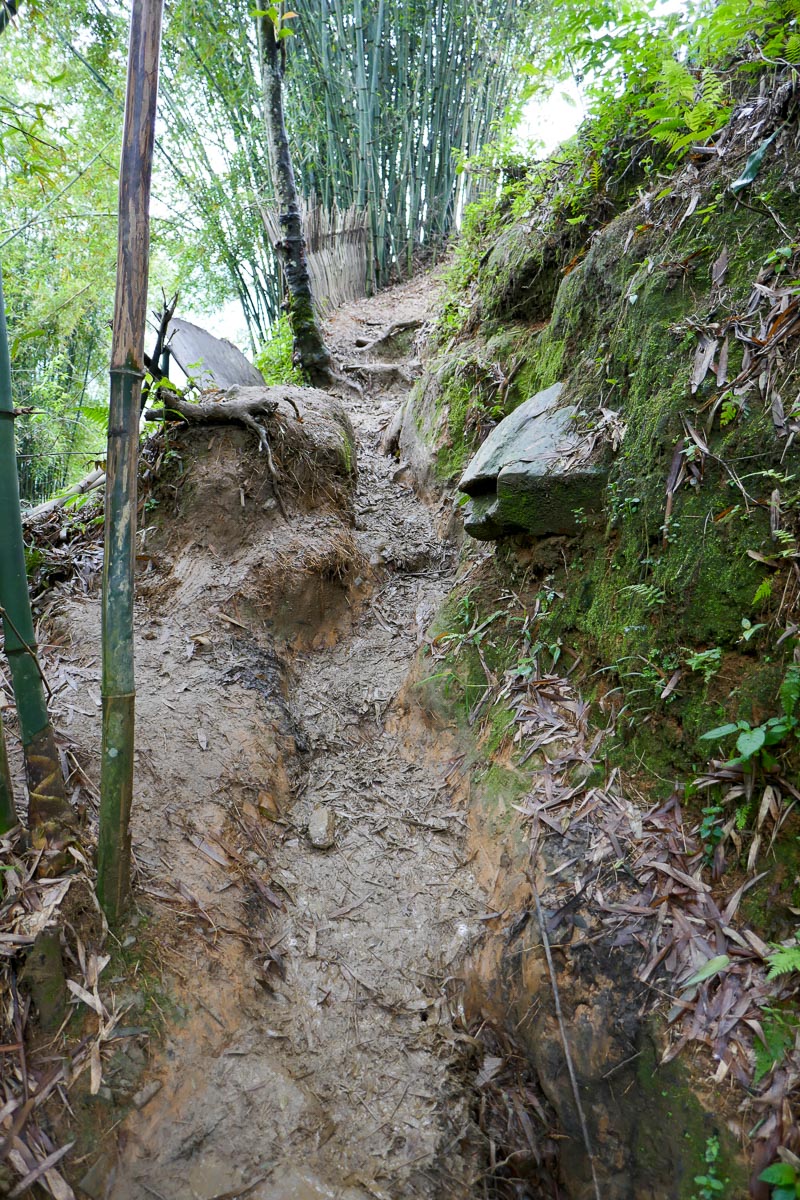
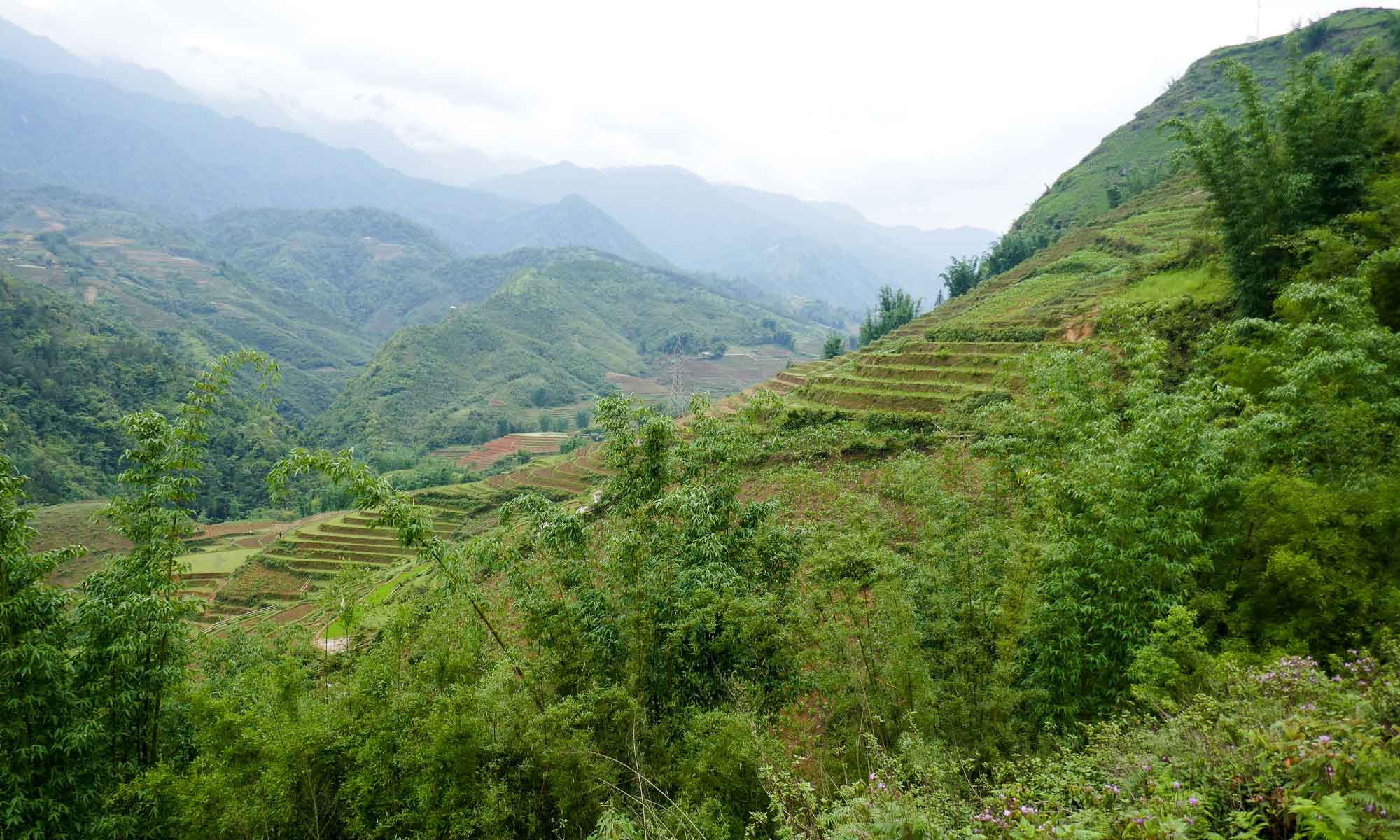
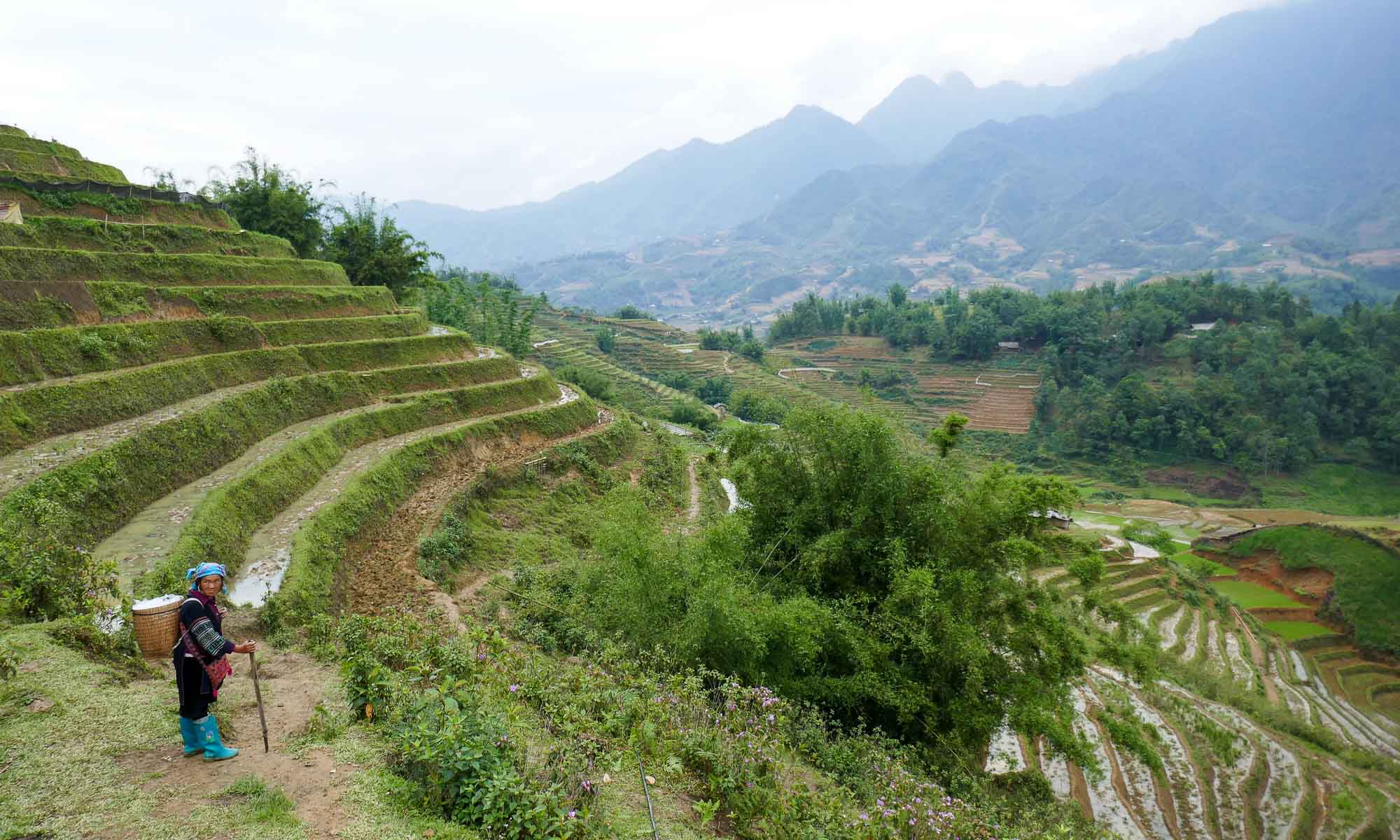
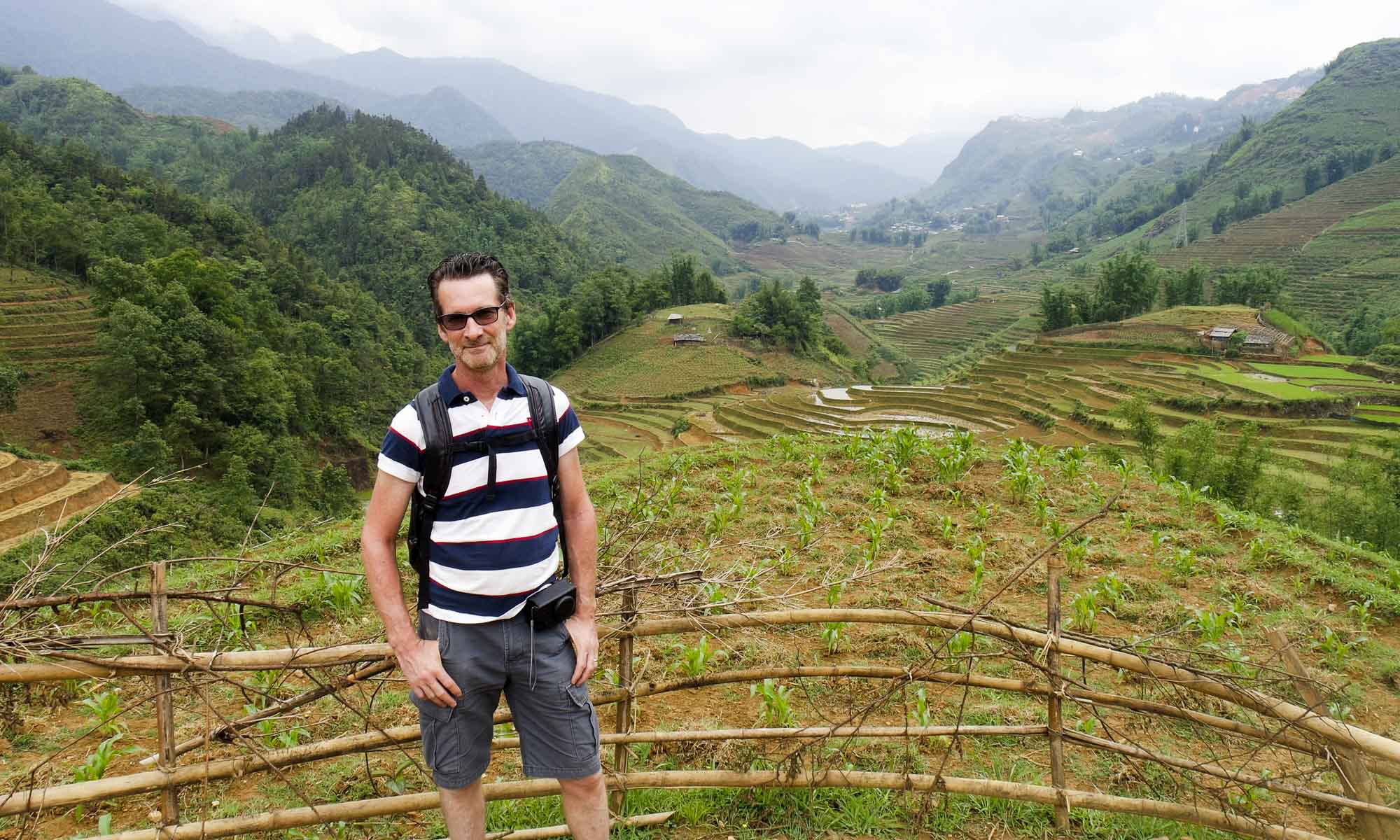
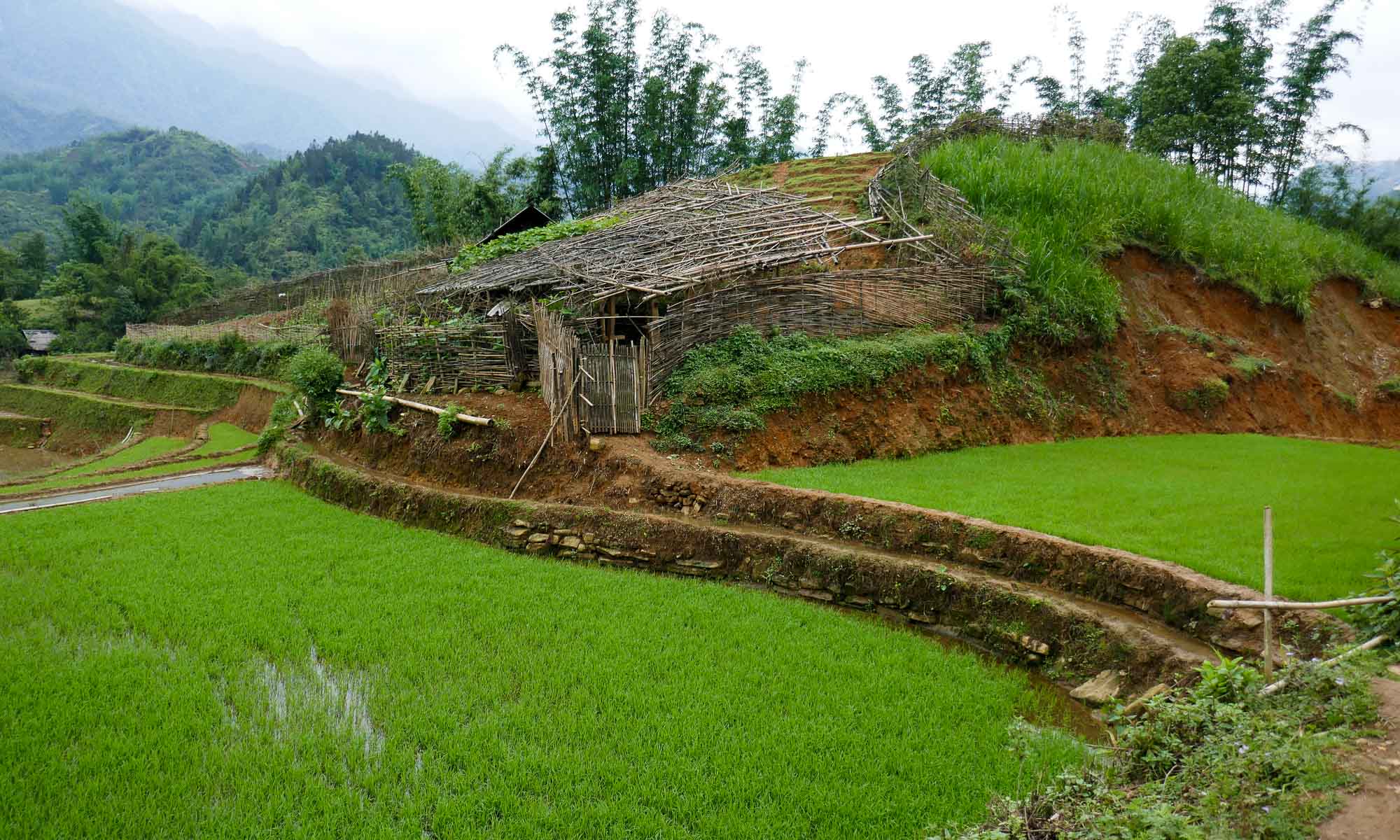
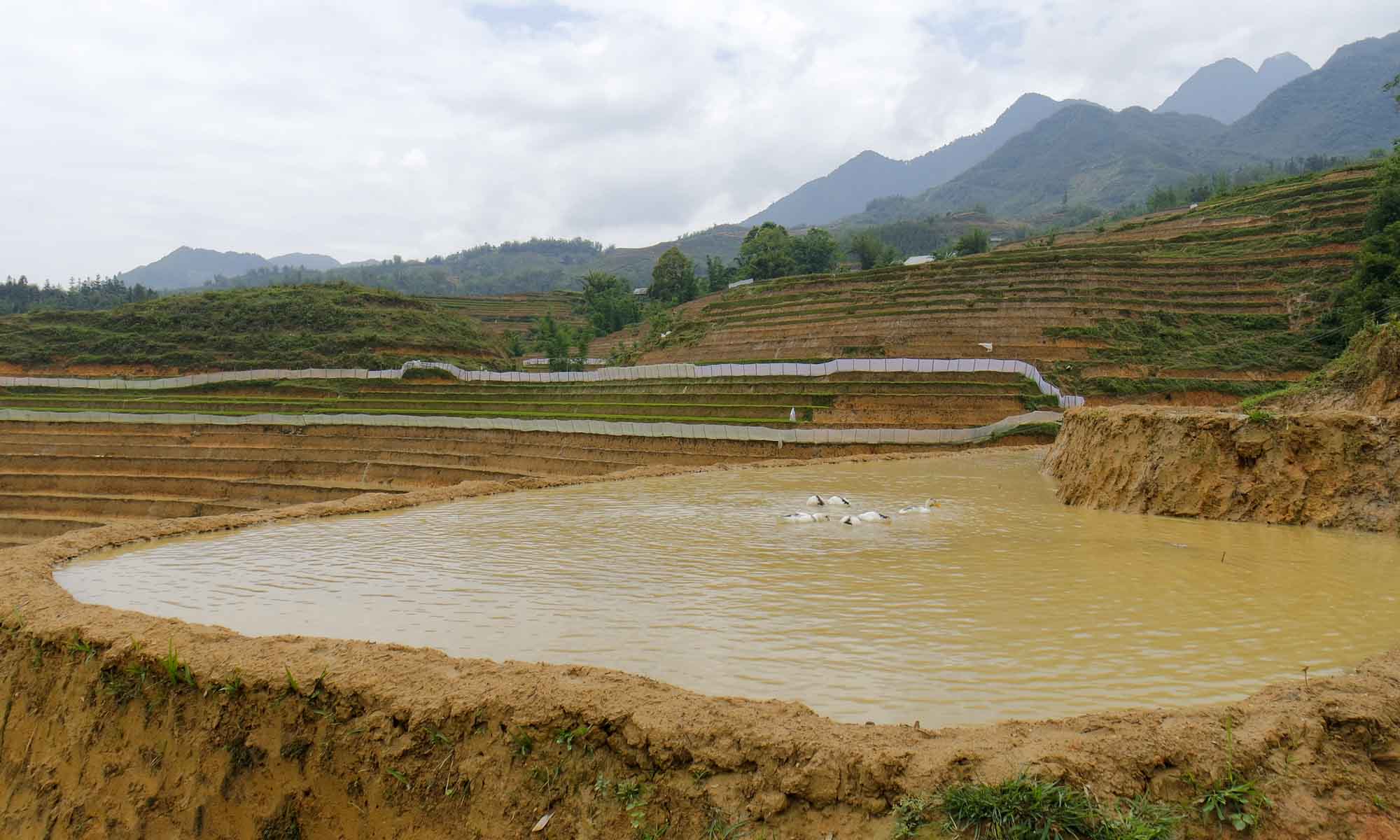
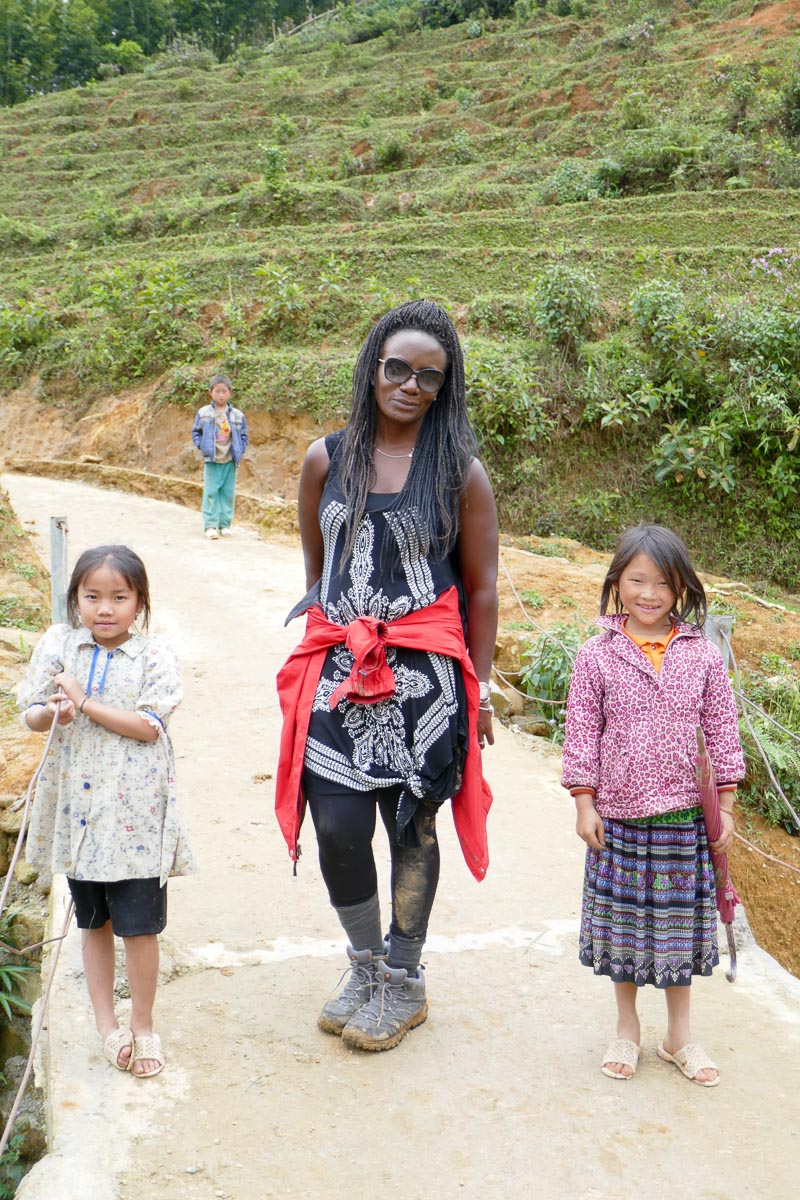
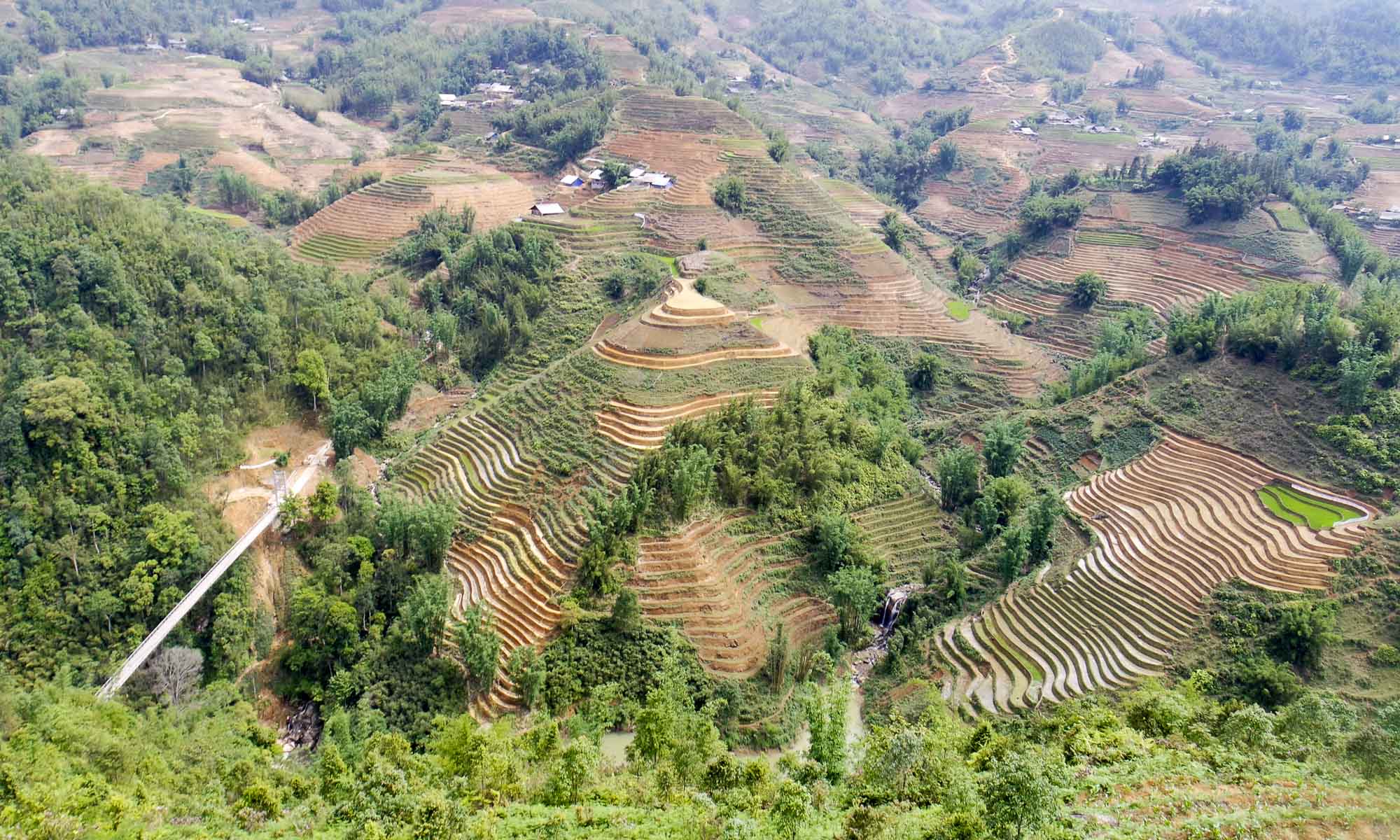
Love Waterfall and Golden Stream
The entrance to Love waterfall is located 14 km up a curvy mountainous road from Sa Pa (Tram Ton pass). With a height of about 100 m, the fall starts from the peak of Fansipan mountain, and drops into the Golden stream.
The walk to the waterfall from the entrance through thick green forest includes a steep downhill section, plus a section crossing over Golden stream.
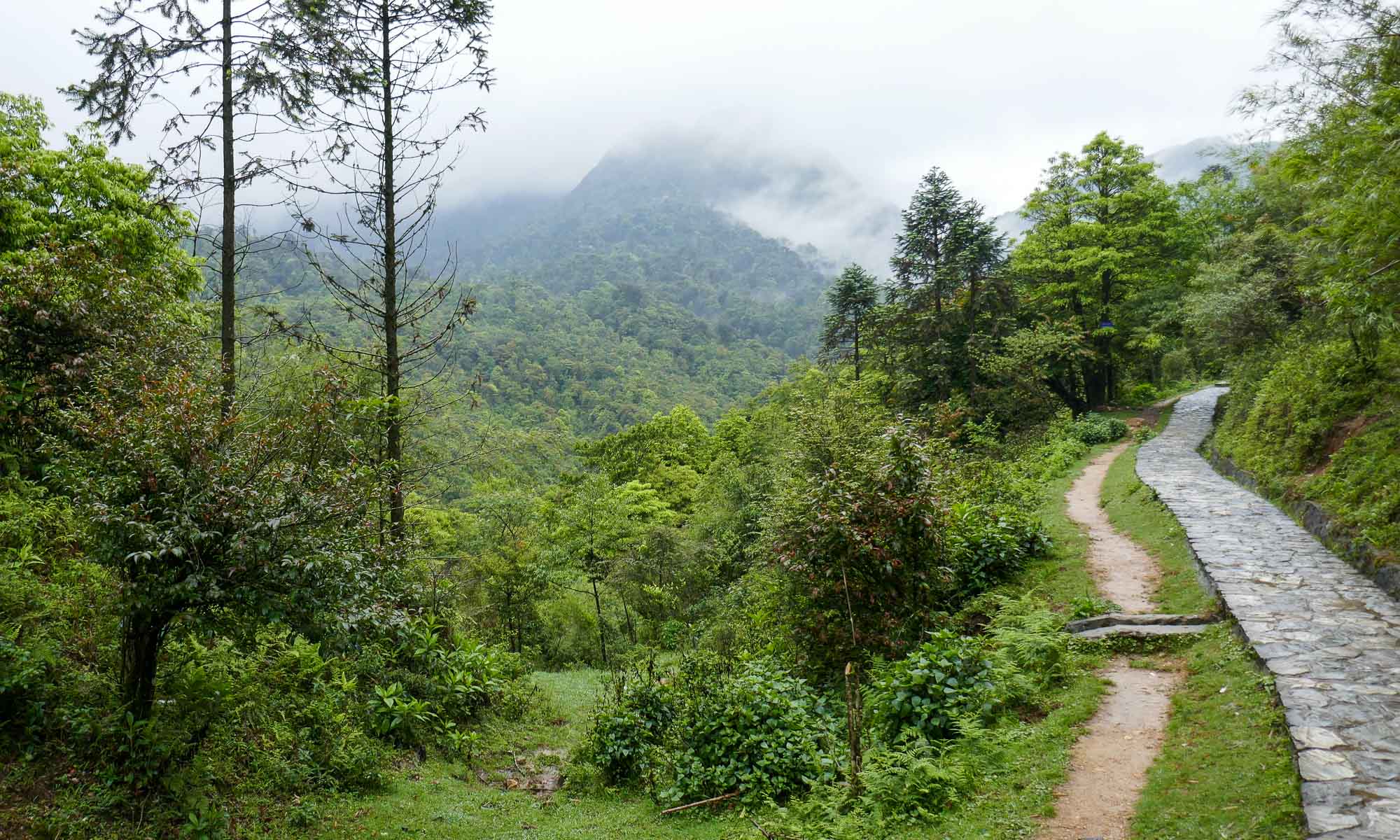



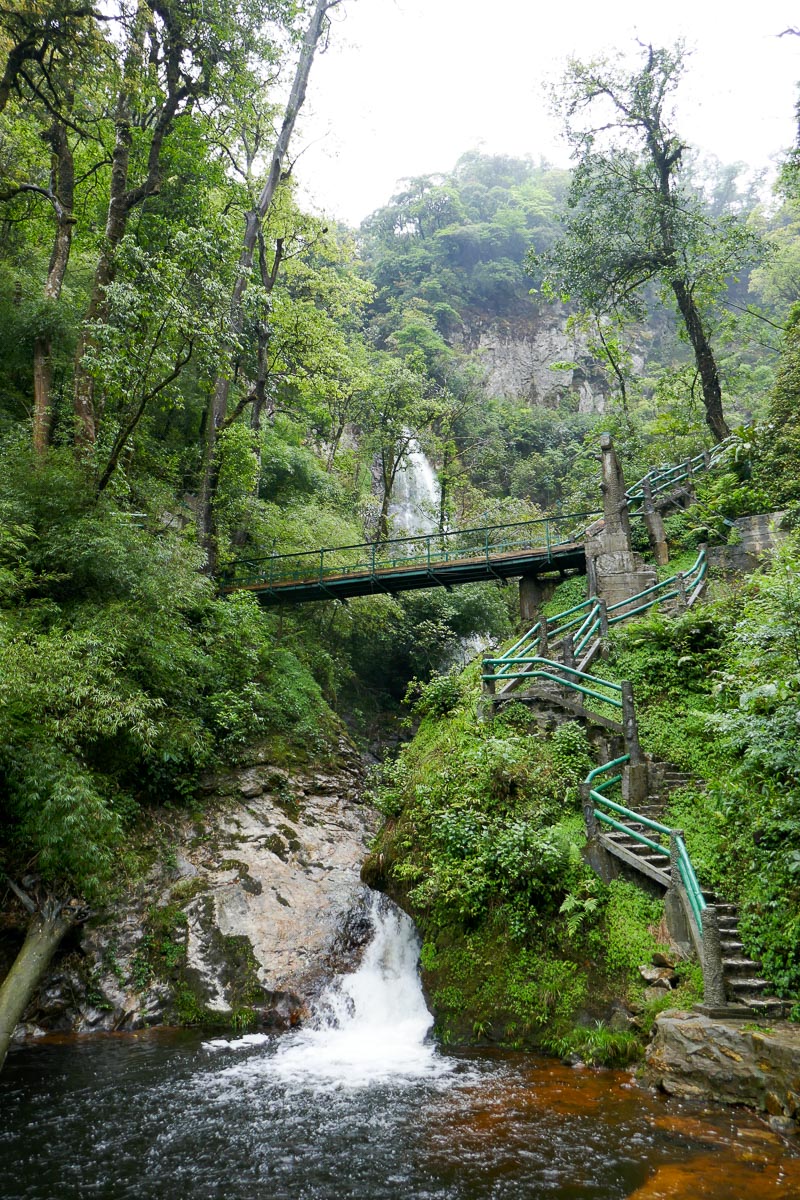
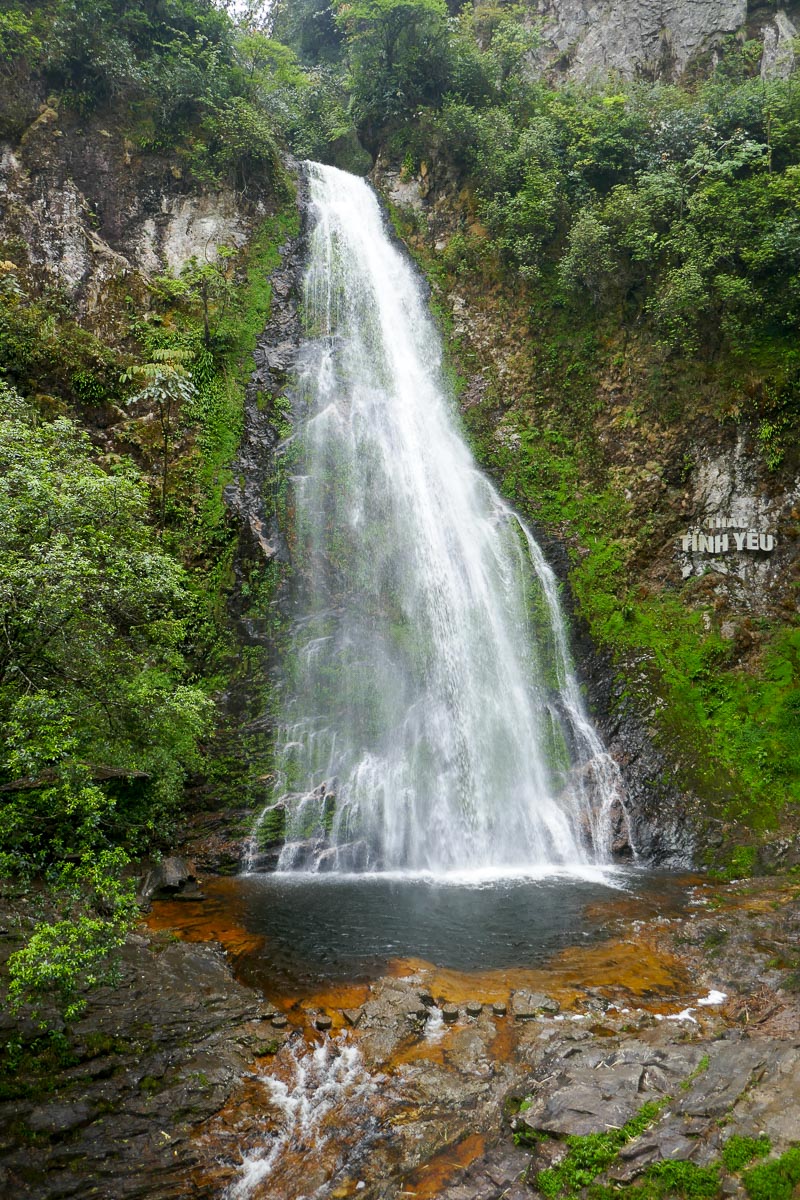
Admission fee: VND 70,000
Silver Waterfall (Thac Bac)
Located between Sa Pa and Love Waterfall, is the Silver Waterfall, which is considered to be the highest waterfall in Vietnam, at a height of 300 m. Though we visited on a rainy day, climbing the steps up to the crossover bridge was worth it, once we saw the view from above.
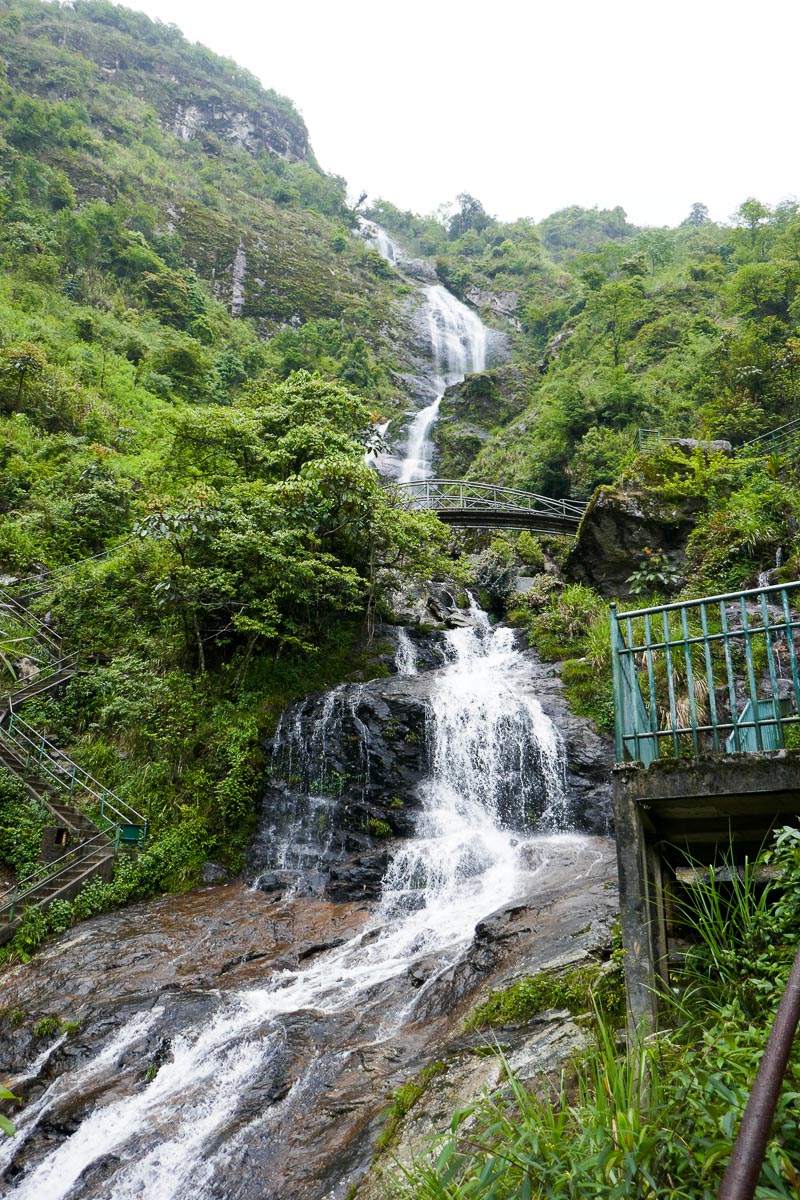
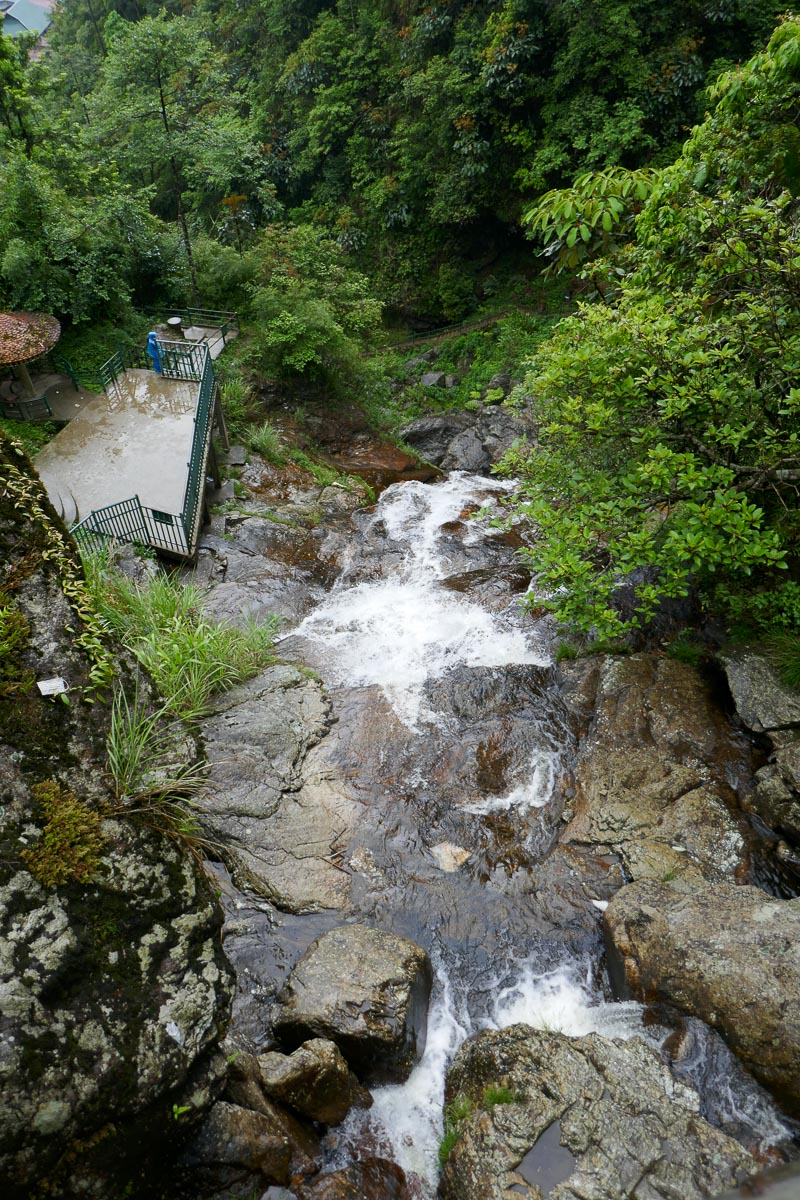
Admission fee: VND 20,000
Additional tidbits
It is common in Sa Pa to experience “four seasons in one day”, and during our trip we definitely experienced, winter, summer and several rainy days. Fortunately, we came prepared, and were able to not let the weather affect our plans.
Dining in Sa Pa
Good Morning View
Based on the recommendation of a couple of our friends that had visited Sa Pa a week before us, we walked about 10 – 15 minutes from the center of town to Good Morning View. We enjoyed the food and relaxed atmosphere of the restaurant, and ended up visiting two nights in a row.
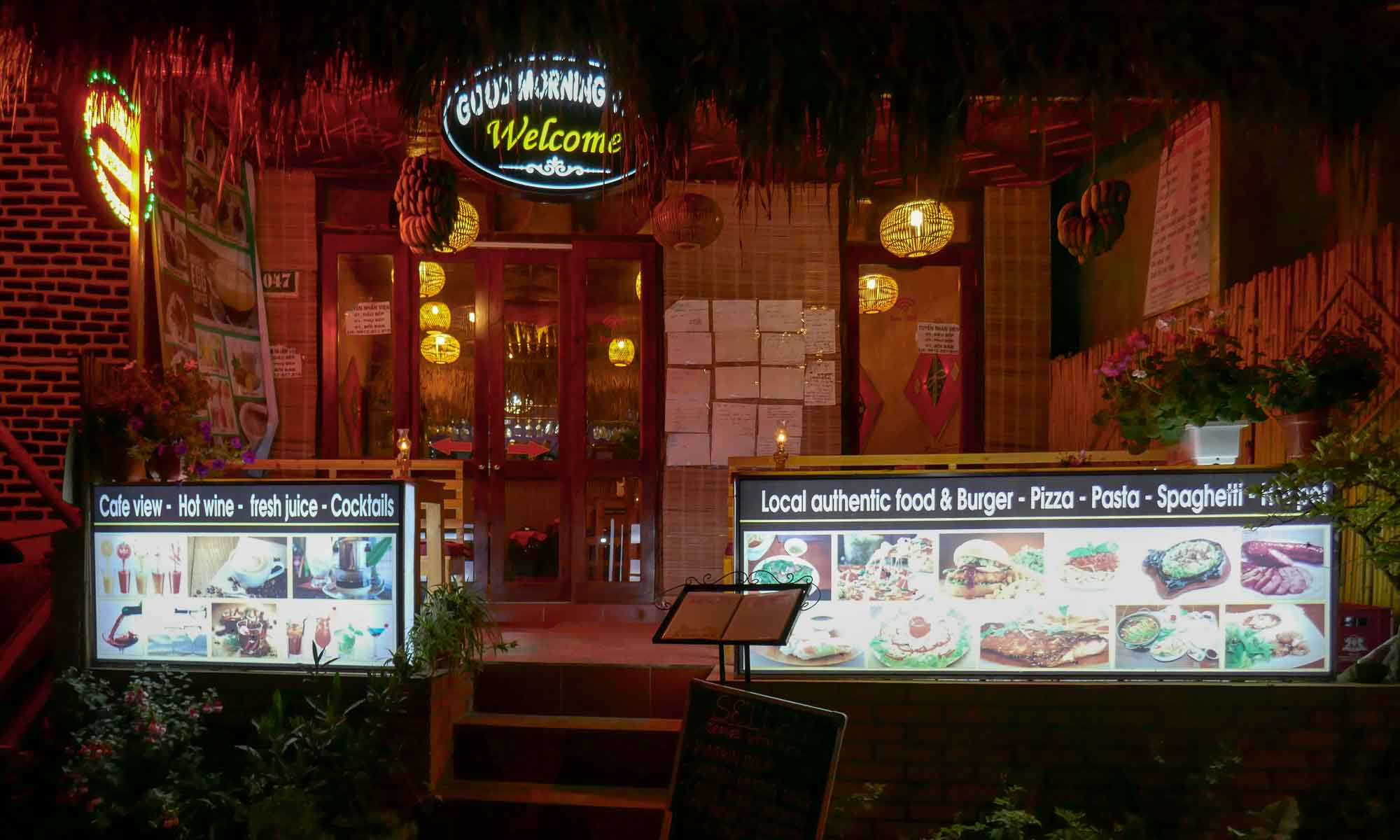
Sleeping in Sa Pa
Sapa Centre Hotel
After quite a rough train ride, we were able to check in early and therefore had some hours to recover. The hotel is located opposite Sa Pa Town square, and a couple of steps from the path to Cat Cat village. The room and bathroom were of a decent size with views of the mountains and rice terraces. Breakfast included both Western and Vietnamese options, with some items available upon request.
Getting to Sa Pa
The best way to get to Sa Pa from Ha Noi is by bus or train. Both of these can be taken during the day or at night, but given that the trip takes just over 8 hours, we decided to maximise our time and take the night train. While the buses go directly to Sa Pa, as there is no train station in Sa Pa, the furthest the train goes is Lao Cai.
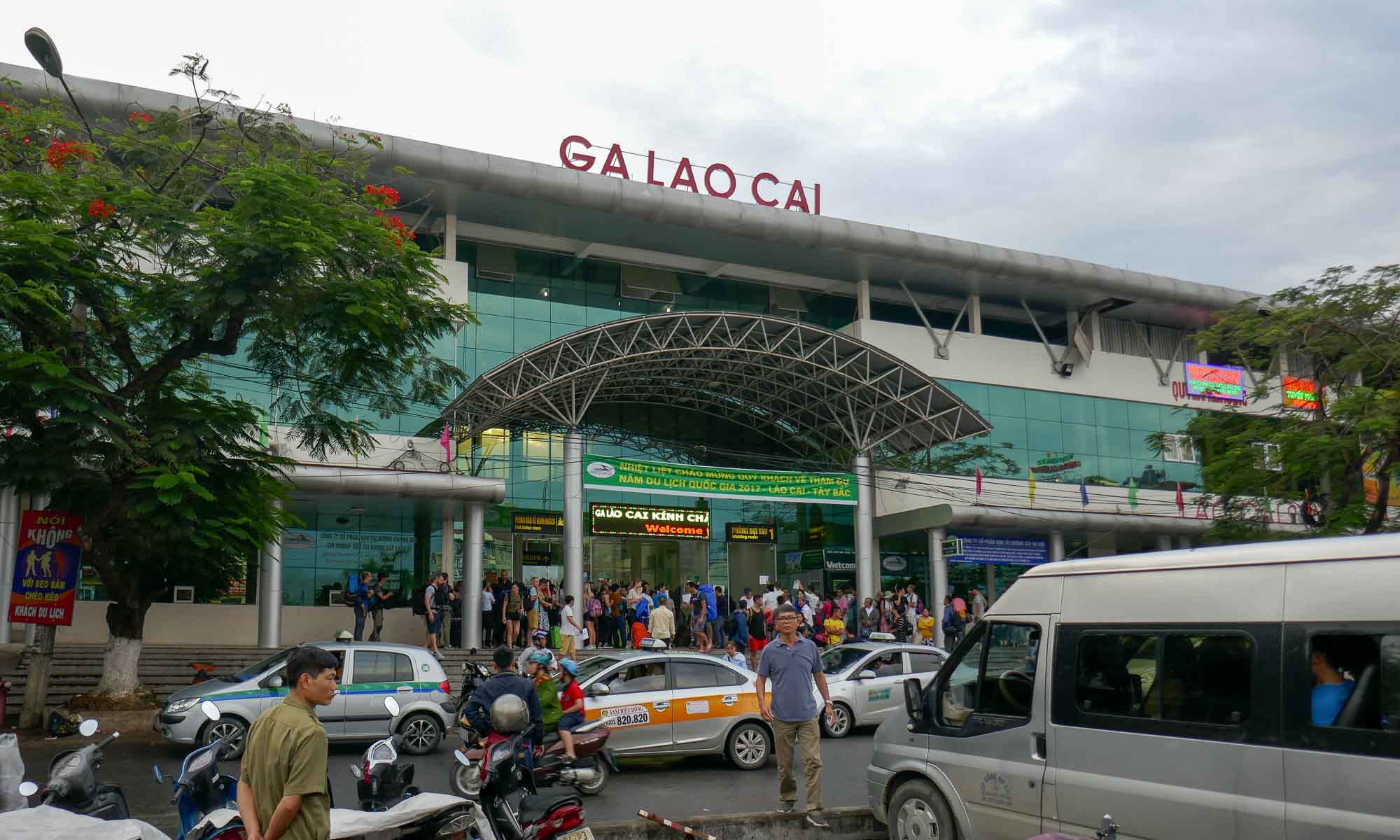
Due to the popularity of Sa Pa, there are several companies who offer service along that route, in addition to Vietnamese Railways (VR), particularly targeted to tourists. However, prices for those other companies are sometimes more than double the VR prices, and the service and quality of the carriages are not that much better.
We boarded about an hour before the train was due to leave, and were pleasantly surprised to find out that the soft sleeper carriages were of a slightly higher standard than the trains we had been on previously. Each berth had what appeared to be clean sheets, and the toilets at the end of the hall were clean. However, we hardly slept on the train as the ride was pretty bumpy.
After a sleepless night on the train we arrived in Lao Cai quite early in the morning. Despite the time, there were hoards of locals attempting to coerce the sleepy passengers to board their buses at inflated prices. We had pre-booked a transfer to our hotel in Sa Pa and were met by the shuttle bus driver at the station entrance.
